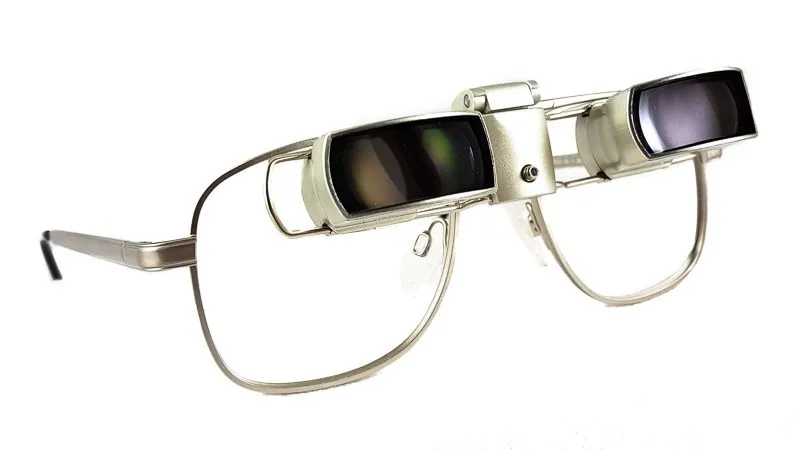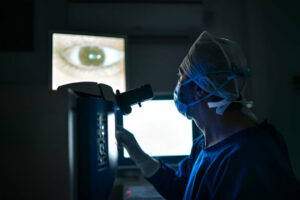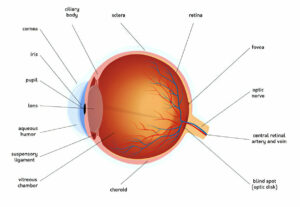Visual impairment impacts all areas of life and those living with CVI may require assistance from professionals in order to thrive and develop further.
Amblyopia (lazy eye) refers to reduced visual acuity in one eye that does not respond to refractive correction (such as prescription glasses). This condition can result from illness, injury or genetics and cannot be cured through refractive correction alone.
Visual Acuity
Visual Acuity (VA), is one of the primary measures of eye function used clinically and should not be seen as the only indicator. Contrast Sensitivity, Color Discrimination and Peripheral Field View may all affect VA even with normal ocular structure and functioning.
Visual Acuity, or VA, can be defined as the smallest size symbol that can be distinguished on an optotype chart from a specified distance. Optotypes commonly used include letters, numbers and shapes (house, square and circle). Most frequently used is Early Treatment of Diabetic Retinopathy Study (ETDRS) VA test charts which contain five rows with various sizes of letters and symbols from large to small sizes on each line ranging from large to small letters on five separate lines and bottom numbers which represent distance from eye to letter or recognize letter; they contain top numbers which represent distance from eye to letter while bottom numbers represent how small letters can be recognized such as 20/20 vision vision.
There are various factors that can interfere with accurate visual acuity measurements, including pupil size, background adaptation luminance, test duration time and optotype selection process – each change in any of these variables could impede your ability to recognize an optotype symbol.
Patients should contact their provider if they experience difficulty performing daily activities despite passing basic eye exams, even if these exams suggest good vision. This may indicate a need for further assessment of visual function or referral to another specialist; comprehensive eye exams offer the most efficient means of evaluating vision; your provider can identify any eye disorders that interfere with daily activities and prescribe treatment accordingly.
Visual Field
Visual field testing is a diagnostic procedure used to detect changes in one’s visual field and can be beneficial both in terms of eye health and neurological conditions.
Visual field tests can detect numerous medical conditions, from glaucoma and brain tumors, to tracking progression of diabetic retinopathy. One common type of visual field exam, called confrontational visual field examination, involves covering your eyes while an examiner moves a hand closer and farther from the center of vision; they will ask the patient when they can see their hand again.
People living with visual field loss may face difficulty when performing everyday activities such as reading and driving. The impact can be particularly dramatic among those suffering from cortical blindness – caused by damage to the visual cortex of their brain – although most often experienced following head trauma; other possible causes include stroke, brain tumors or neurological diseases.
Many individuals suffering visual field loss experience a gradual reduction, while some experience sudden blindness due to medical conditions like retinal detachments that affect one or both eyes, affecting all aspects of visual field loss including blurred or distorted vision as well as objects moving out and back into focus.
The divided visual field paradigm takes advantage of how visual information is distributed to each cerebral hemisphere; so each side of the body sees half of visual reality. Although this method doesn’t directly measure neural dynamics, other neuroimaging techniques such as fMRI or PET can more precisely reveal which parts of the brain are involved with cognitive processes such as visual identification.
Perception of Movement
Visual images must first be processed and encoded in the brain before being recognised by the eye. If this processing system becomes impaired due to damage, then an individual could lose their ability to perceive movement – this condition is known as motion blindness or nystagmus and involves many parts of their brain being involved.
As light passes through the cornea, lens and retina it creates an image on the neural part of retina that is sent to the occipital lobe (primary visual cortex) at the back of our brains for processing and translation into sensations of movement, transmitted further down our neural pathways by which areas such as cortex interpret and guide eye and finger movements.
An impact to the head can damage this system and alter vision in various ways, potentially harming cornea, lens and retina as well as optic nerves and visual pathways linking these structures with the occipital lobe – this condition known as cortical visual impairment or CVI may ensue.
People living with this form of visual impairment cannot rely on information provided solely from their eyes; therefore they become more susceptible to falls, accidents and injuries which can have a profound impact on their quality of life, leading to depression, isolation and low self-esteem.
This type of visual impairment is sometimes known as “brain-based visual impairment“, although it should not be confused with eye diseases like cataracts, glaucoma and age related macular degeneration which also contribute to visual problems.
People living with cerebral visual impairment often struggle with accommodation issues and can benefit from spectacles with near adds to enhance near vision. Infants in particular often learn best at close distances and use vision for communication; it is crucial that any child having vision difficulties be given a clear explanation as to why their difficulties exist so their parents understand that the child is not engaging in bad behaviour or being difficult.
Visual Processing
Visual Processing refers to how an individual utilizes what they see. A person with vision impairment may struggle with spatial relationships (the position of one object relative to another) or may fail to recognize certain visual patterns and stimuli – both of which could impact a student’s ability to comprehend what they’re reading or viewing in class.
Other types of visual processing limitations include difficulties with discrimination and sequencing, which relate to recognizing images in specific sequences such as letters or numbers. Visual motor processing connects one’s eyes and hands for tasks like handwriting or drawing, making visual motor processing an essential skill set.
Visual processing limitations can have a significant impact on an individual’s quality of life, from school or work performance issues to interfering with social interactions or recreational activities. Therefore, it is very important for those with visual impairments to seek assistance from certified professionals so that they receive optimal support.
Vision therapy may help treat symptoms associated with visual processing disorders by using fun activities, computer tasks and special optical devices to strengthen eye’s ability to process visual stimuli. Furthermore, cognitive behavioral therapy has been demonstrated to boost emotional health and problem solving abilities in those diagnosed with visual processing disorders.
Researchers believe vision impairment to be an urgent health concern and should be treated similarly to chronic diseases; yet studies often overlook it when calculating disease burden on society. Therefore, it is imperative that those living with visual impairment receive support to live healthy and fulfilling lives; this may come through education, rehabilitation or medical treatments such as retinal prosthetics – evaluation is important here so the appropriate treatment plan can be determined.













